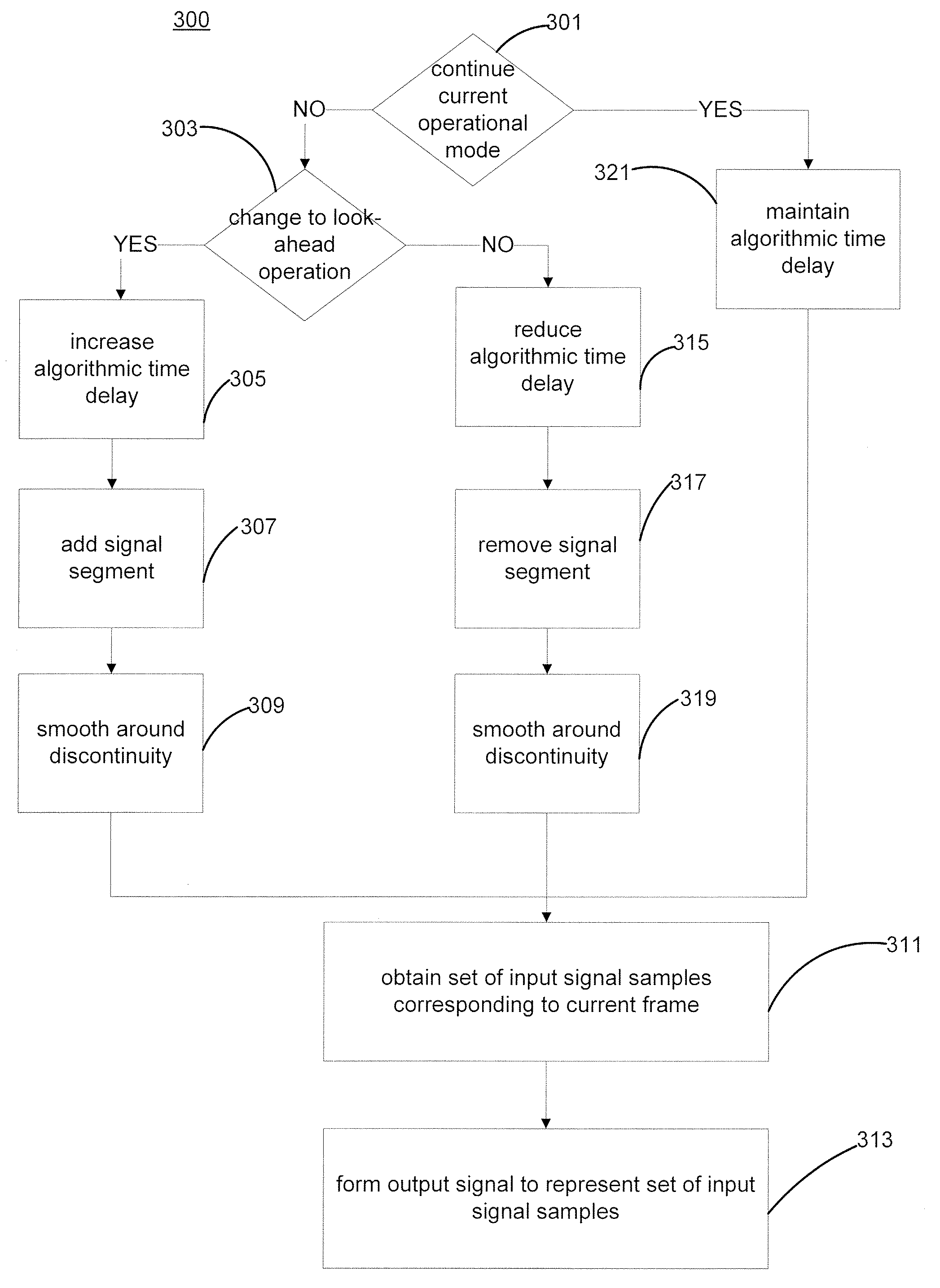Encoder Delay Adjustment
a delay adjustment and encoder technology, applied in the field of encoder delay adjustment, can solve the problems of increase in algorithmic time delay by look-ahead time duration, and achieve the effect of increasing algorithmic time delay and decreasing algorithmic time delay
- Summary
- Abstract
- Description
- Claims
- Application Information
AI Technical Summary
Benefits of technology
Problems solved by technology
Method used
Image
Examples
Embodiment Construction
[0013]In the following description of the various embodiments, reference is made to the accompanying drawings which form a part hereof, and in which is shown by way of illustration various embodiments in which the invention may be practiced. It is to be understood that other embodiments may be utilized and structural and functional modifications may be made without departing from the scope of the present invention.
[0014]FIG. 1 shows a buffering structure of an input signal for a signal encoder that is configured for a look-ahead operation in accordance with an embodiment of the invention. With an embodiment of the invention, the signal encoder utilizes an adaptive multi-rate (AMR) speech algorithm. For example, the AMR speech coder (in accordance with 3GPP TS 26.290) supports a plurality of bit-rates including bit-rate modes of 12.2 kbits / sec, 10.2 kbits / sec, 7.95 kbits / sec, 7.40 kbits / sec, 6.70 kbits / sec, 5.90 kbits / sec, 5.15 kbits / sec, and 4.75 kbits / sec. FIG. 1 shows a buffering ...
PUM
 Login to View More
Login to View More Abstract
Description
Claims
Application Information
 Login to View More
Login to View More - R&D
- Intellectual Property
- Life Sciences
- Materials
- Tech Scout
- Unparalleled Data Quality
- Higher Quality Content
- 60% Fewer Hallucinations
Browse by: Latest US Patents, China's latest patents, Technical Efficacy Thesaurus, Application Domain, Technology Topic, Popular Technical Reports.
© 2025 PatSnap. All rights reserved.Legal|Privacy policy|Modern Slavery Act Transparency Statement|Sitemap|About US| Contact US: help@patsnap.com



